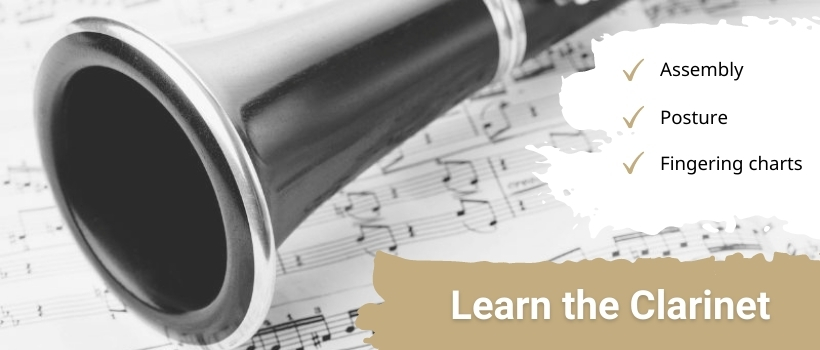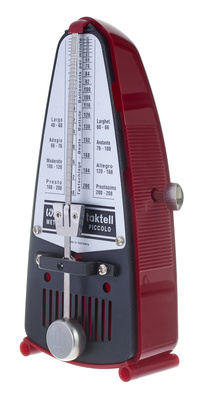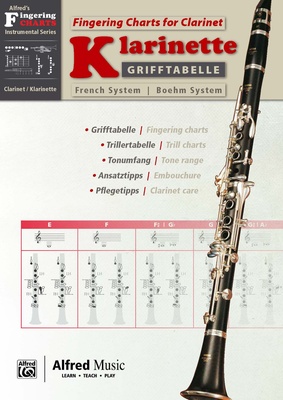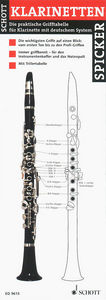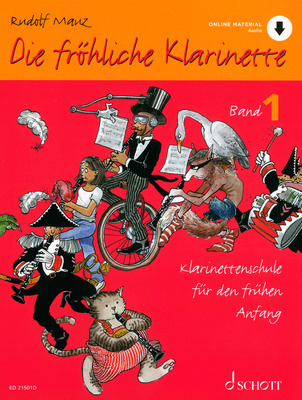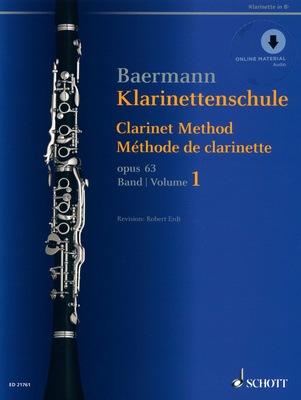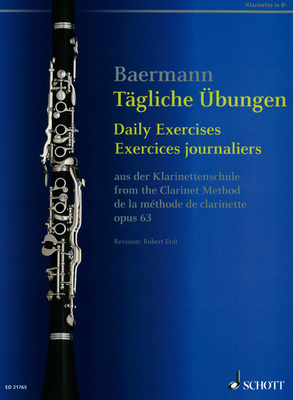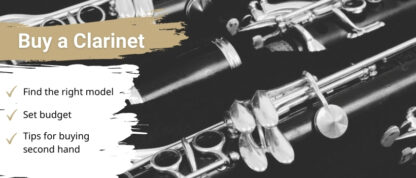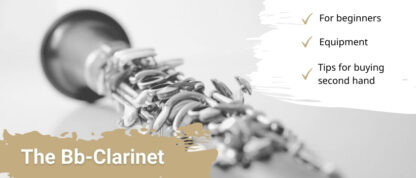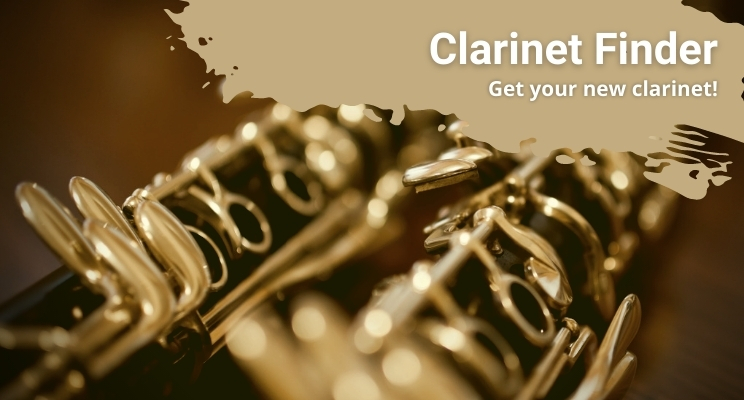You want to learn the clarinet and are looking for tips on structure, handling, sheet music and much more? Then you’ve come to the right place! We want to make learning as easy as possible for you and show you how you can begin to pursue this beautiful hobby at low cost.
Clarinet with labelling: all relevant individual parts
Before you can start learning the clarinet, you should familiarise yourself with the individual parts of this beautiful instrument. The clarinet is assembled from five parts with different functions. Once the structure is clear, we will show you how to play the first notes and what you should bear in mind stylistically.
The clarinet mouthpiece

The mouthpiece of the clarinet is round and closed on the upper side, its opening is on the underside. This is flat and is therefore called the slide. To produce a sound, a reed is placed on the slide and tightened with the reed screw.
The Barrel Joint
The mouthpiece is placed on the pear. Unlike the rest of the instrument, this is not conical but cylindrical in shape and is sometimes affectionately called a barrel. The pitch of the clarinet varies depending on its length. If a short bulb is attached, the clarinet sounds higher, if a longer bulb is used, the whole instrument sounds somewhat lower.
The Upper and lower joint of the clarinet
The names already reveal that the block of tone holes and keys on the clarinet is divided into two pieces. Depending on whether it is a German or Boehm design, the pieces interlock mechanically or are only connected via the peg.
The Bell
Because of its conical shape, the bell is alternatively also called a cup, lintel or funnel. The bell serves to amplify the instrument and is particularly relevant for the full development of the low register. Similar to the pear, changing the bell can change the sound of the clarinet.
Structure of the clarinet
The rough construction is now clear and you can easily put the body together at the tenons. You should be particularly sensitive when making the upper and lower parts of the Boehm construction so that the mechanism can slide loosely into one another. Two important components that you now need to pay attention to in order to start learning the clarinet are the reeds and the reed screw, because without them you cannot elicit any notes from the instrument.
Reed an reed screw (ligature)
The reed screw and reed are always mentioned as belonging to the mouthpiece, and this is true. However, these two parts can easily be replaced by other models and are removed after each playing session. To make your clarinet ready to play, place the reed on the smooth surface of the mouthpiece. Either it is fastened in the traditional way with a reed cord or it is enclosed and clamped by a reed screw.
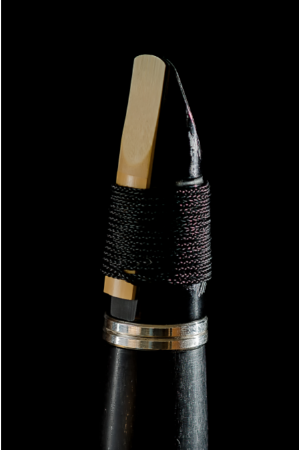
When deciding on your favourite attachment, the only thing that really helps is to try it out and listen. Fastening with a string requires some practice, but has the advantage of giving the reed a lot of elasticity. The reed screw, however, is certainly less complicated to use on a daily basis, especially for beginners, and is just as good in terms of sound. You can therefore base your decision on the mouthpiece – if it has grooves, lacing is easier, a smooth mouthpiece invites you to buy a reed screw.
Learning the clarinet – this is the best way to go about it!
Good posture when playing the clarinet

There are many aspects to learning the clarinet – not only is blowing into the instrument and learning the fingerings important, but also the way you stand while practising. The sooner you get used to a good, straight posture, the better, because then you won’t run out of breath or hurt your back even during long practice sessions.
Therefore, stand so that your legs are shoulder-width apart and you can breathe into your abdomen in a relaxed manner with a straight back. The shoulders and neck also remain loose and straight – avoid pulling the shoulders up or rounding the neck or back. Let your arms hang relaxed. To bring the clarinet into position, spread the arms at about a 45° angle from the body.
If you find the instrument a little heavy at first and are worried that you will not be able to stabilise it sufficiently with your right thumb, you can attach it to a strap around your neck for more stability.
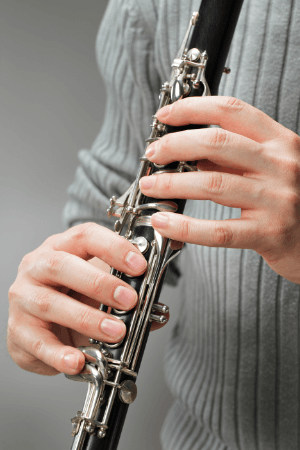
Not only should your posture be right for good playing, but also the way you hold the instrument. Especially for very young players or ladies with delicate hands, it makes sense to look for a slightly smaller instrument that can be held comfortably. The fingers should be able to reach all the tone holes and keys without difficulty, and the holes should always be loosely covered by the whole fingertip to avoid a cramped finger position. The left hand covers the tone holes and keys on the upper part, the right hand is responsible for the lower part of the instrument. Make sure that the fingers are round against the clarinet, as if you were holding a glass or something similar. When not in use, the fingers should lie loosely next to the tone holes.
How does the clarinet sound production work?
It’s clear: you blow into the clarinet and a sound comes out at the front. This is because your breath causes the reed to vibrate, which in turn causes the air in the instrument to vibrate. The more tone holes and keys you close with your fingers, the larger the sound space in the instrument and the deeper the tone. However, in order for the notes to sound clean and to be clearly separated from each other, the player must train not only the coordination of the fingerings, but also the embouchure and the support.
The embouchure on the clarinet
Simply blowing is therefore not enough; it takes some technique to elicit pleasantly resonant tones from the clarinet. That is why the embouchure, as musicians call it, is important. This refers to the way you place your lips and teeth around the mouthpiece. Clarinets are played with a closed embouchure (in contrast to the more open possibilities on the saxophone, which may also be interesting). This means that the incisors rest on top and are covered by the upper lip. They are in the right position when you have the mouthpiece about one centimetre in your mouth. Now press the lower lip against the leaf from below. Imagine saying the letter W, then it will automatically curl in a little. The tongue touches the inside of the leaf very lightly, because you need it to push against it.
Tongue thrust on the clarinet – 7 types exist
Another term that is important for clarinetists is the reed blow. The vibration of the reed makes a sound. If you hold the reed with your tongue and then release it while taking in air, you make it vibrate. This technique is very important for the clarinet because the individual notes are cleanly separated from each other by the tongue thrust and are not unsightly interrupted by breathing. An even flow of air and the tongue as coordinator of the individual notes result in particularly even playing. In addition, the tongue thrust ensures that the beginning of the tone is as precise and powerful as possible. The embouchure is one of the most difficult techniques in learning the clarinet, which can be practised and perfected over and over again even by professional clarinetists and requires a lot of patience, especially in the beginning.
As you can see here, there are many ways to separate the tones and play with them. For example, you can blow into the instrument until a soft, swelling tone appears all by itself. Alternatively, you can experiment with different tongue positions and test how different it sounds to release the reed with a “Da”, with a “Ta” or the very soft “Ha”.
Therefore, in addition to learning music and playing pieces, take time to explore the different expressive possibilities of your clarinet. The exercises that seem rather boring at first are precisely those that will make learning the clarinet much easier in the long run. By the way, you can challenge and train your muscles by using a slightly harder reed at the beginning of the practice session and then switching back to your regular reed thickness. If you make regular efforts with the embouchure and tongue thrust, you will quickly achieve success.
Practising the support with the clarinet
When it comes to learning how to breathe correctly, you will understand why a straight posture is essential for playing the clarinet. In order to be able to generate a constantly strong air flow in the instrument, you need a good volume of lungs. However, the lungs are anatomically limited by the rib cage. Therefore, it is important for musicians to breathe deeply into the abdomen in order to be able to take in as much air as possible and release it in a controlled manner. You have control over the diaphragm, which is located just below the chest. Musicians also call it a support, because it builds up the necessary pressure when releasing the air to produce stable tones in the instrument.
In contrast to natural breathing, when playing the clarinet you breathe in through your mouth in a jerky manner (the upper lip is lifted slightly from the instrument for this purpose) and out into the mouthpiece for a very long time with the appropriate lip and diaphragm tension (not tension!) – if possible without audible interruptions. If you have just started learning the clarinet, it makes sense to practice standing up, as breathing in a seated position is made even more difficult by the reduced space and requires greater concentration.
Clarinet fingerings for beginners
The first note you will learn on your clarinet is the g’. For this you only need to master the embouchure, all tone holes and keys remain open while the left thumb holds the instrument. You should take your time at the beginning to practise the embouchure again and again and to coordinate the length of the tone. Count the beats 1-2-3-4 in your head and play whole, half and quarter notes alternately. You also have to keep pauses clean. The easiest way to improve rhythm and timing is with a metronome in the background. This way you can hear deviations immediately and you can be sure to always stay in the same beat.
The fingering chart clarinet as standard equipment
Then follow the other notes of the scale. It makes sense to either look for a fingering chart on the internet or a compact work in which all the basics and special fingerings are recorded. Note that the fingering charts differ depending on whether you play a Boehm or German system. A standard work with basic music theory, the first beginner’s pieces and, above all, all the scales that need to be practised are also part of the basic equipment for learning the clarinet.
Clarinet Sheets
Especially at the beginning, collections of sheet music that are adapted to the learning progress of the beginner make sense. In the long run, the goal should of course be to play interesting pieces that you like to hear yourself, but in the first steps, especially if you want to learn the clarinet autodidactically, too big jumps are often rather a hindrance.
Clarinets sheet for free?
However, if you are no longer a beginner and are looking more for sheet music that interests you personally – perhaps also for unfamiliar pieces – then you should no longer torture yourself through the flood of sheet music collections, but look more specifically. There are some really good online shops that specialise exclusively in the sale of sheet music and where you will definitely find what you are looking for.
Making music is an expensive hobby, that much is certain. That doesn’t mean, however, that you have to buy one music book after another to learn to play the clarinet well – unless you are looking for something very special. As with many instruments, simple pieces for the clarinet that are generally known anyway can be found easily and often free of charge online. A good place to start is Pinterest, where some clarinet friends have entire collections of sheet music from a wide variety of musical fields.
Learning the clarinet online – Is that possible?

Unlike the saxophone, not quite as many alternative learning methods have been able to establish themselves for the clarinet, such as complete course units online or private offers via Skype. Most of the time, learning the clarinet still takes place in a brass class or during lessons with a private or music school teacher. Through online platforms, you can look for a private teacher who offers not only on-site lessons but also online learning units. This is a great way for adults who have to work during the regular practice times of music schools, but who really want to learn the clarinet, to get more flexible lessons. All you need is a rented or your own instrument, learning materials that you coordinate with your teacher and, of course, a stable internet connection and a camera with a high-quality microphone.
FAQ: Learning the clarinet made easy
The clarinet is a demanding instrument, but with regular practice you can still achieve good results within two years. It is important to include breathing and clean intonation from the beginning when learning the clarinet. It has been proven that it is better to invest at least 15 minutes every day and let the brain continuously process smaller new learning impulses instead of overwhelming oneself once or twice a week with learning impressions that are then not completely processed.
No, not really. It is true that children can process learning impulses more quickly and motor skills can be influenced more easily, but children learn in a less goal-oriented way and therefore sometimes not as sustainably. In terms of planning, strategy and discipline, adults are therefore superior to young pupils and can make up for a lot. Two factors that should not be underestimated are intrinsic motivation and enthusiasm for the instrument. If they are lacking, learning the clarinet is difficult and success is very slow.
In our article on how to play the clarinet you can read exactly how to do it. Roughly speaking, you take the clarinet about one centimetre into your mouth, the incisors rest on the round upper part, the lower lip rolls in on the flat underside of the reed without pinching it off. Then you take a breath and let it flow into the instrument while keeping the belly tense against the diaphragm. Without closing any tone hole, a g should now sound.





